Driving on Snowy Roads with Tesla and Pirelli All-Season Tires! A 1100km Touring Real-World Report
公開日:2025.01.24
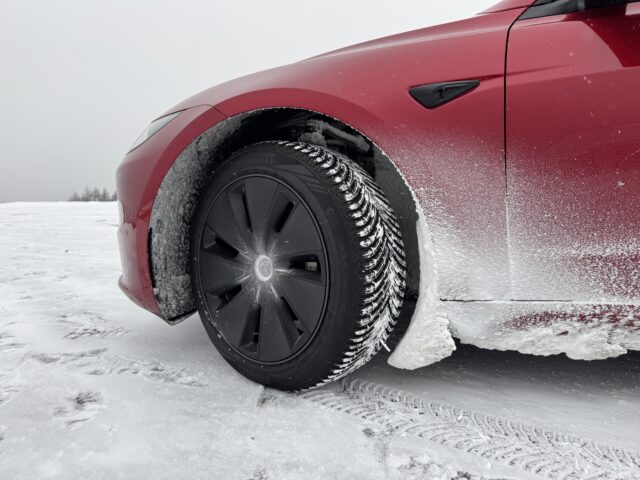
コンテンツ
Driving on Snowy Roads with All-Season Tires
Previously, I introduced on this blog the installation of Pirelli’s all-season tire “Cinturato All Season SF 3” (Cinturato All Season SF3) on a Tesla. This time, as a follow-up, I’m reporting on how these tires performed on snowy roads.
ピレリの新型オールシーズンタイヤ「Cinturato All Season SF 3」を購入 – テスラモデル3に履かせてみた
First, I want to clarify upfront that when you say you drove on snow with all-season tires in Japan, you inevitably hear comments like “That’s reckless!”, “It’s dangerous!”, or “You must use studless tires on ice!”
However, this review is made fully aware of those concerns, and that is the fundamental premise here.
Personally, I’ve never been a fan of studless tires, which I consider a kind of Galápagos tire.
I understand their strength on ice, but their poor high-speed stability, lack of rigidity, and weak grip and braking performance on dry and wet roads ruin the performance of high-performance cars. For that reason, I basically avoid studless tires and instead choose all-season tires or European winter tires.
In my winter driving environment, over 95% of the time, the roads are cold but dry or wet. Using soft studless tires in such conditions results in poor grip, longer braking distances, and worsened driving feel. It diminishes the appeal of a high-performance car.
So, what about when you encounter ice? That question naturally arises.
In those situations, I drive very cautiously. I avoid dangerous spots like black ice as much as possible, and if I know the road is frozen, I steer clear of ruts and consciously drive on snow-covered or packed snow sections. This way, I try to maintain grip as much as possible.
Critics often say, “You say that because you don’t really know what true ice is.”
But I was born and raised in a snowy region, have been skiing since I first got my license, and spent many winters at ski resorts in Shinshu during my student days. I have considerable experience driving on snow and have used studless tires many times.
Even so, I deliberately choose to use all-season tires.
Driving on Snowy Roads with Pirelli All-Season Tires
This time, I took a Tesla equipped with Pirelli all-season tires on a year-end tour.
I experienced various snowy road conditions on highways, Nagano’s Venus Line, the Myoko area in Niigata Prefecture, and along the Sea of Japan coast.
The average temperature during this tour was about 3.5°C, including the milder Kansai region.
In the mountains, I often drove through areas with temperatures between -7 and -9°C, encountering wet, near-freezing roads prone to ice. To sum up the conclusion, throughout the entire trip, there were absolutely no problems. In fact, I never felt uneasy even when driving at a somewhat brisk pace.
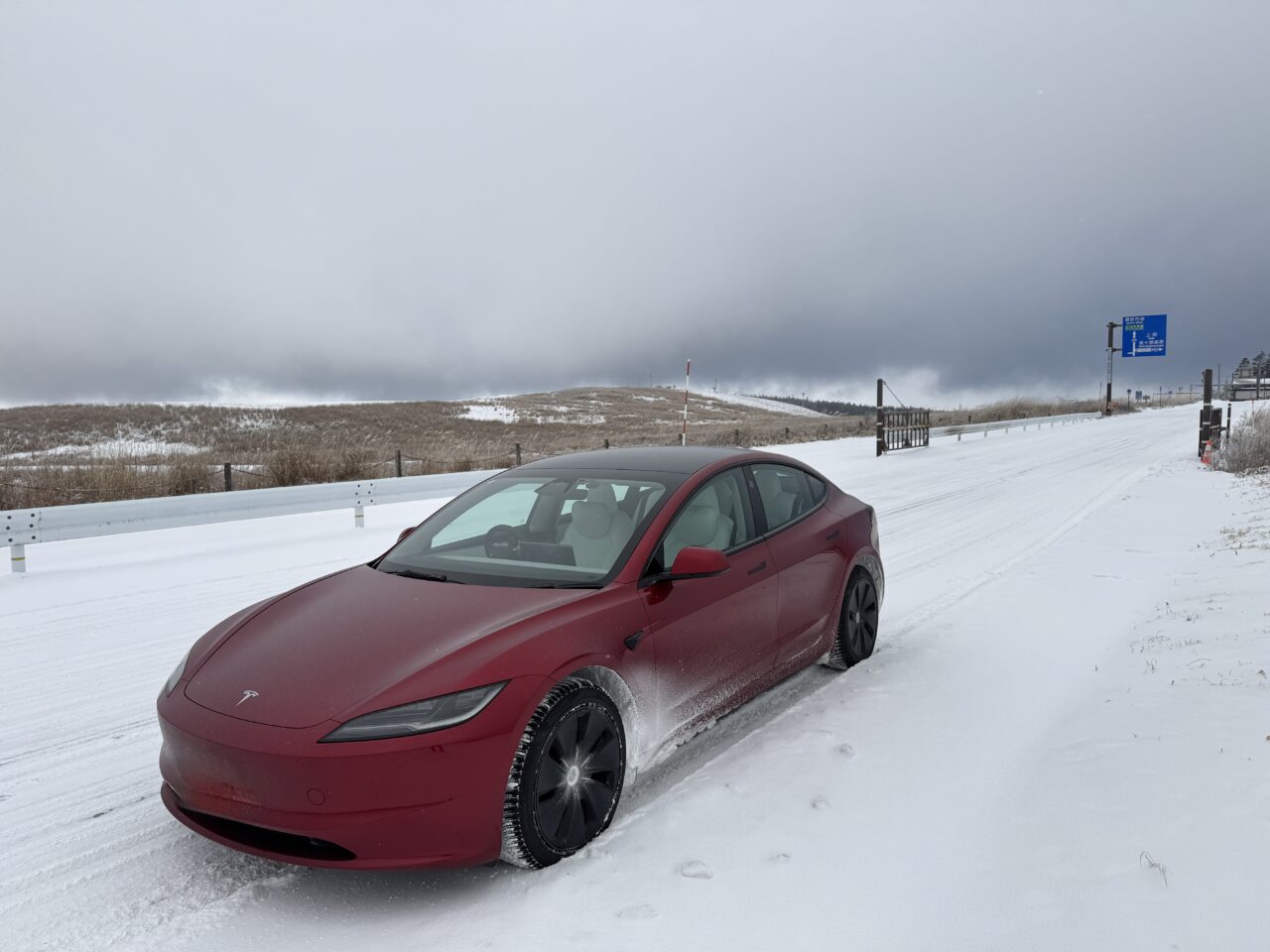
All-season tires have V-shaped grooves, so while they don’t offer the same traction as studless or winter tires, they provide sufficient grip on packed snow. They climb hills normally, so for those living south of the Kanto region who ski occasionally in winter or commute during heavy snow, all-season tires are more than adequate.
Especially for drivers living in urban areas who spend most of their time on wet or dry roads, all-season tires are better suited. Compared to the soft studless tires, all-season tires feel more rigid, offer stronger braking power in emergencies, and make driving more enjoyable.
Tesla’s Characteristics and Compatibility with All-Season Tires
Tesla’s electric vehicle characteristics played a big role in this snowy drive.
Tesla performs extremely precise motor control, making it a car that rarely loses traction. I have driven many cars, but I’ve never encountered one with such meticulous traction control.
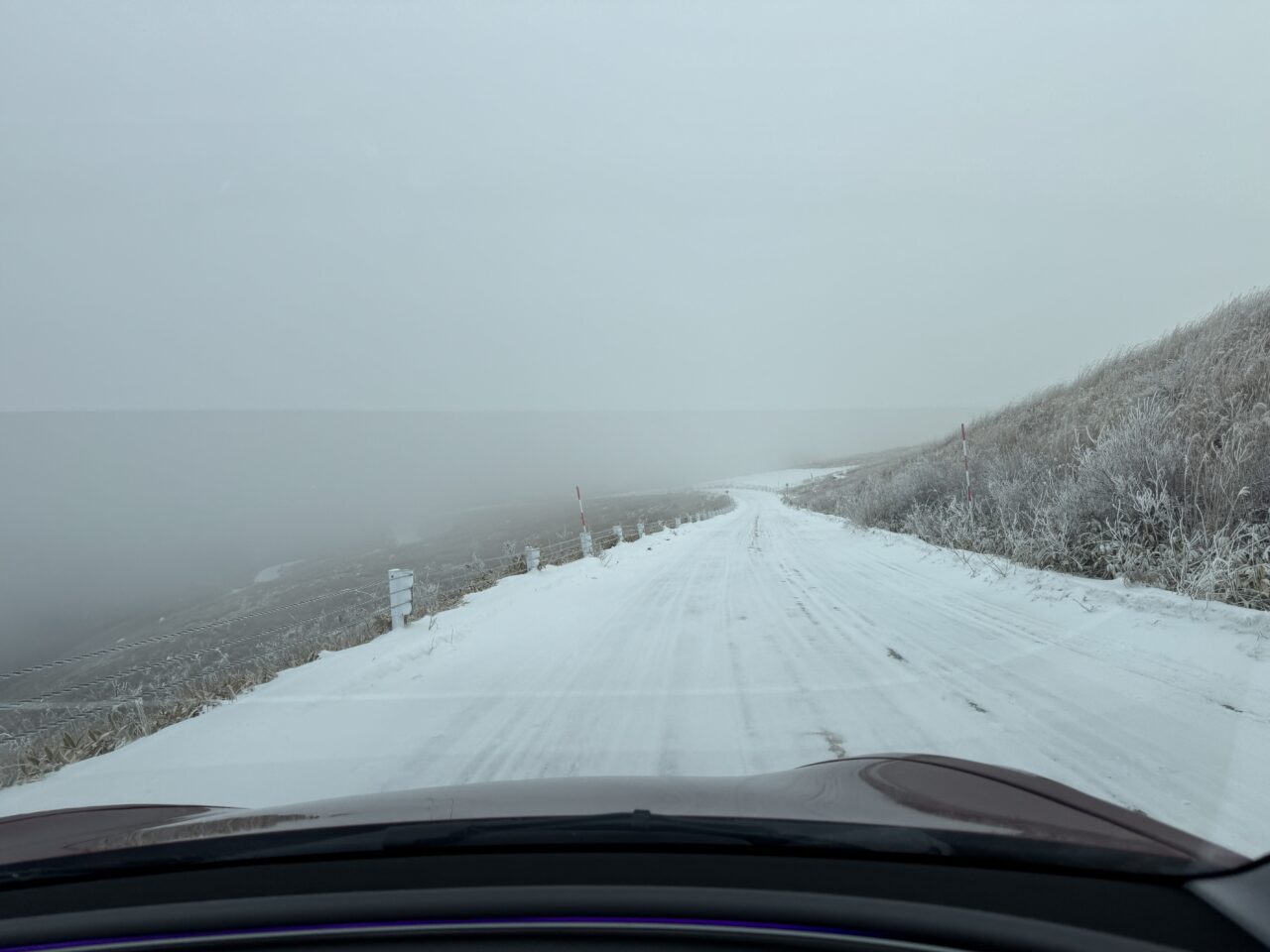
Also, its regenerative braking system is outstanding.
Tesla’s regenerative braking isn’t just ordinary regen braking; it incorporates ABS-like control that smartly maximizes tire grip. Even in places where lightly pressing the regular brake pedal would cause slipping, using regenerative braking slows the car down almost magically.
In this respect, I felt that the combination of Tesla and all-season tires is excellent.
Driving in Harsh Snow Conditions
On Nagano’s Venus Line, I drove snowy roads multiple times, deliberately taking curves shaded and frozen over.
Of course, it’s not like driving on summer tires, but I never felt it was dangerous. While there was some slipping, simply avoiding ruts or placing the tires on snow-covered parts quickly restored grip. In fact, I was more surprised at how far modern all-season tires can go.
I tested how far Tesla Model 3’s all-season tires (Pirelli CINTURATO ALL SEASON SF3) can go.
No issues on snowy roads at all. Traction and handling are more than sufficient.
Actually, Model 3’s control is incredibly precise.Even where ABS would activate with the foot brake, regenerative braking works so well it slows down normally. pic.twitter.com/VBPyv96kzu
— Hiro@Welcome Home, PORSCHE (@boxster_gts) December 27, 2024
This time, I didn’t encounter fully polished mirror ice (slick frozen roads), but in such conditions, all-season tires would likely struggle. However, even studless tires have a hard time in those extreme situations.
I also drove through heavy snow in Myoko and on snowy highways, never feeling uneasy.
Of course, heavy snow caused some lateral swaying in ruts, but that would happen with any tire. On packed snow and heavy snow, there was never a moment when the car wouldn’t move or stop properly — no problems at all.
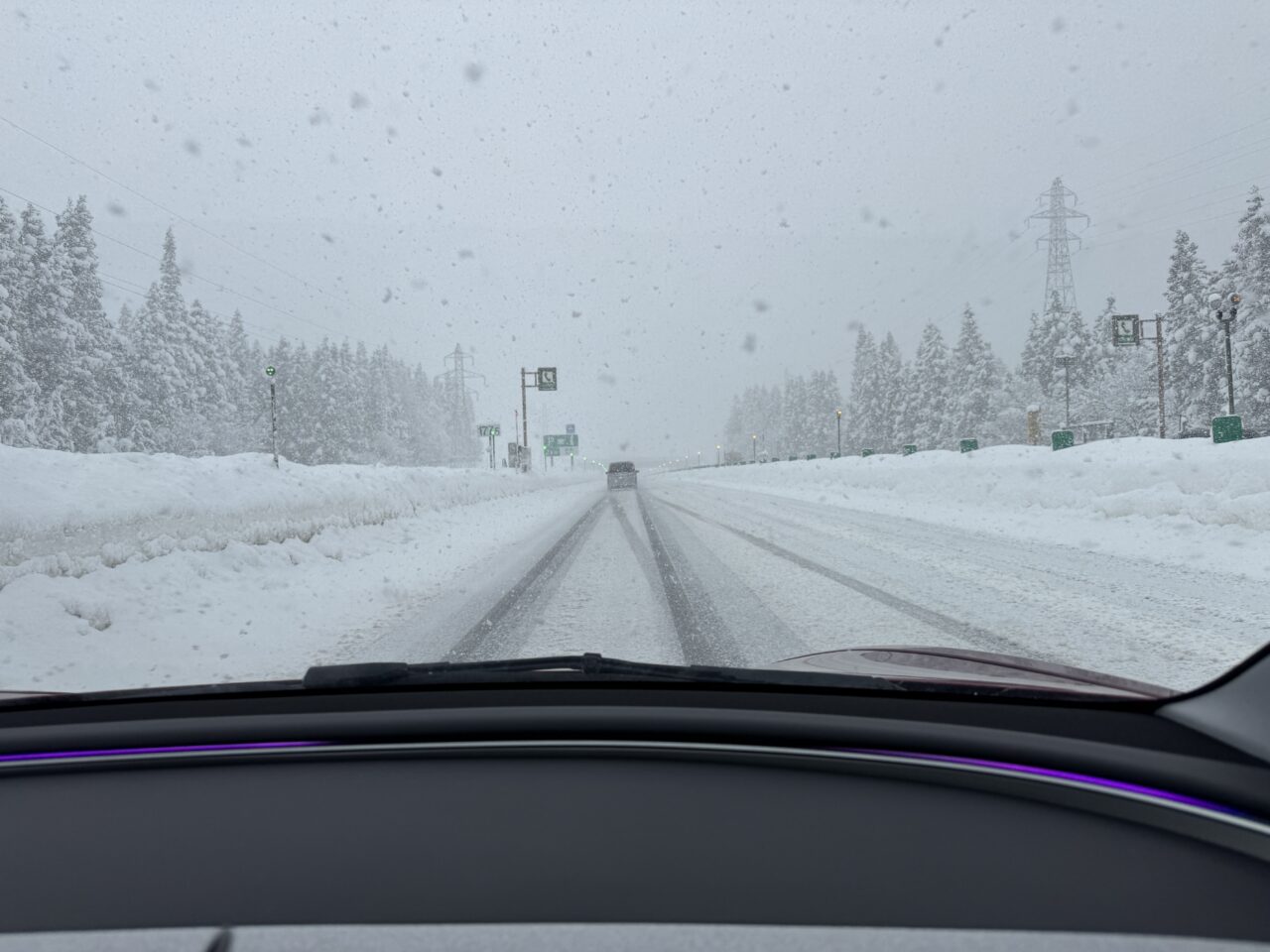
Strengths and Weaknesses of All-Season Tires
On mostly wet slushy roads after snow melts or on rain-soaked roads, all-season tires truly shine. Studless tires are extremely weak on rain and wet surfaces, but all-season tires show strength under these conditions, offering high braking power and safety.
Ultimately, what matters is what you prioritize.
If you need to drive regularly on extreme conditions like fully polished mirror ice, you should choose studless tires over all-season tires. However, for most people, slush, packed snow, and lightly frozen roads are the norm, and all-season tires handle these well.
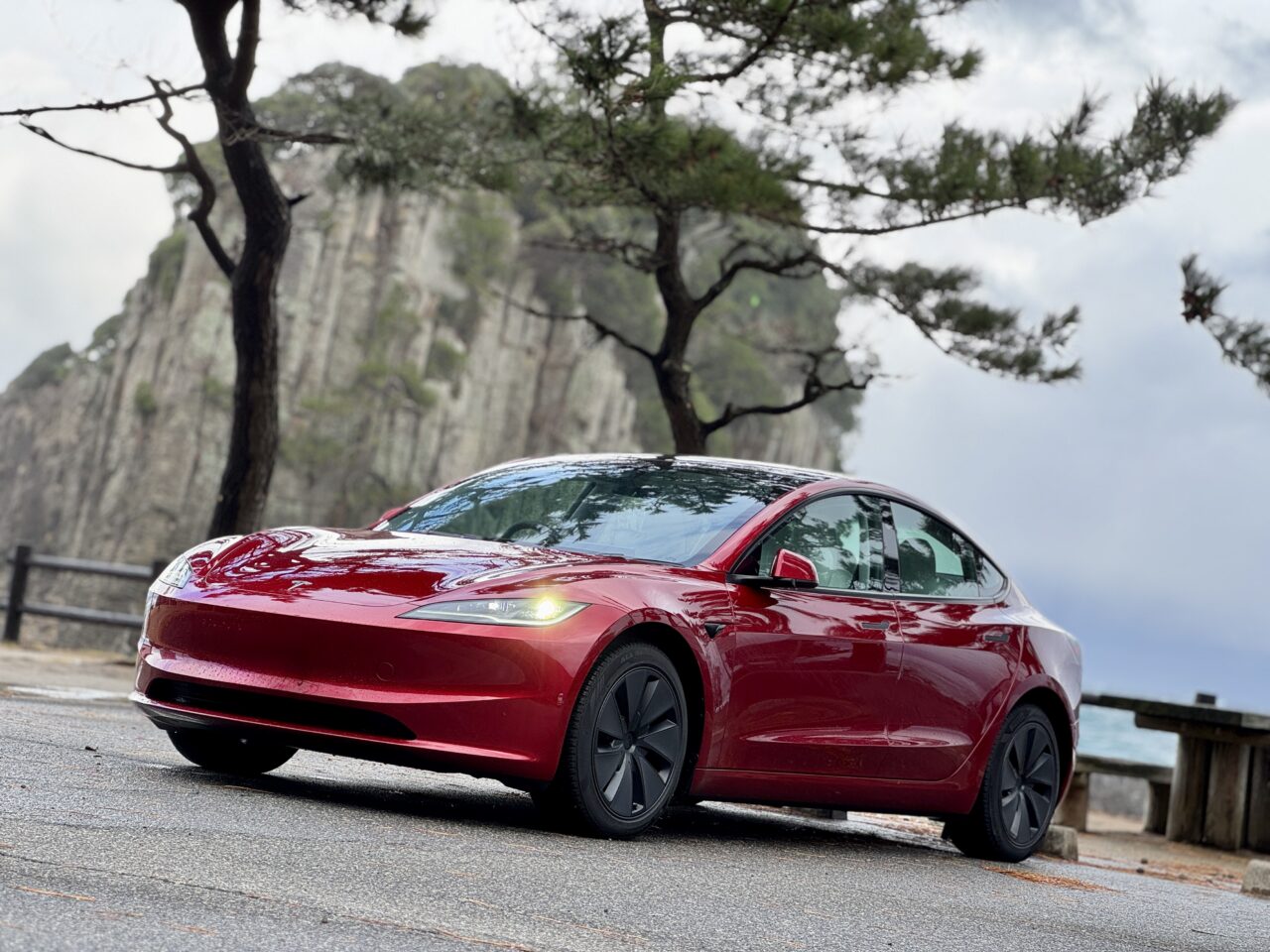
During the drive along the Sea of Japan coast, it was snowing heavily, and many cars wore local studless tires, but I was able to keep almost the same pace. On mostly wet slushy roads, all-season tires showed their strength. I was especially impressed by their grip on wet roads rather than snow.
On coastal roads by the Sea of Japan, I even enjoyed cornering like on summer tires, feeling the grip that fully brings out the car’s performance.
Conclusion on Choosing All-Season Tires
In conclusion, I don’t recommend all-season tires for those living in areas with frequent mirror ice, but for urban residents who find swapping to studless tires every season a hassle, all-season tires are a perfectly viable option.
By the way, studless tires are mostly used only in Japan worldwide.
Overseas, in similar environments, all-season or winter tires are mainstream. While ice roads aren’t as common as in Japan, ice does exist seasonally and environmentally, and they manage with all-season or winter tires.

For drivers who want to enjoy driving and their car’s performance, I hope all-season tires become one option to consider.
However, if you prioritize grip in extreme icy conditions for safety, you should choose studless tires. Personally, I prioritize grip and driving feel in over 95% of cases rather than rare extremes, so I choose all-season tires.
For drivers who want to maximize their car’s performance while balancing safety and driving enjoyment, all-season tires are an attractive choice.
Just be sure to carefully assess your driving environment and priorities to select the best tires for you.
このブログが気に入ったらフォローしてね!


Comment ( 0 )
Trackbacks are closed.
No comments yet.